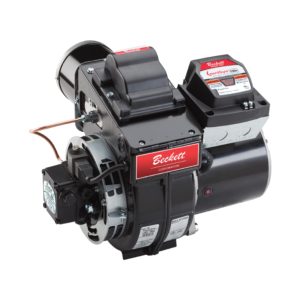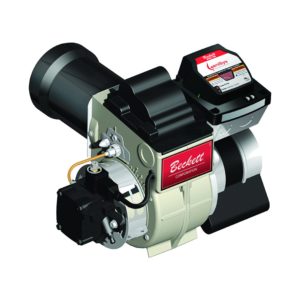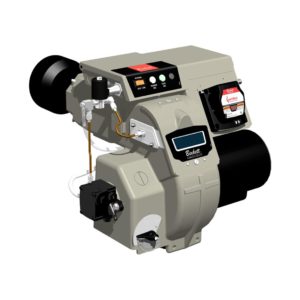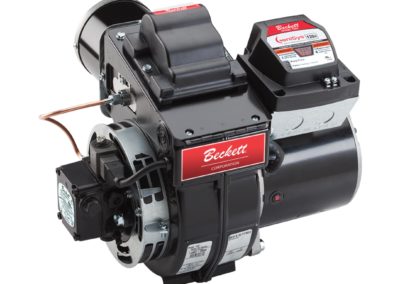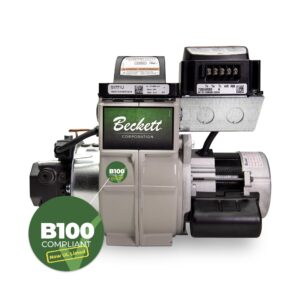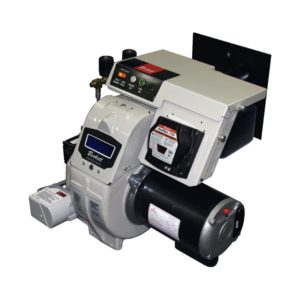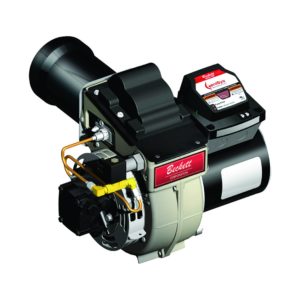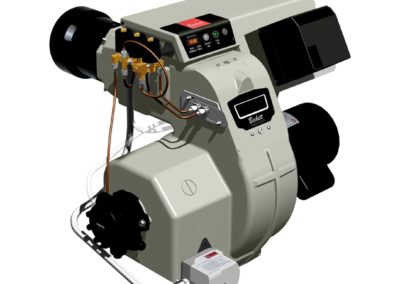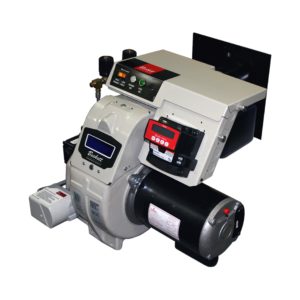Several previous Technical Information Bulletins have touched on the effect of temperature on oil-fired appliance performance. This edition of our technical bulletin series will discuss the impact of cold oil and cold air on combustion in a modern flame retention oil burner.
Cold oil can have a significant impact. The viscosity (resistance to flow) of fuel oil increases as its temperature decreases.
The viscosity of typical No. 2 fuel oil increases from 35 SSU at 100°F to 52 SSU at 30°F. (See Figure 1.) An increase in viscosity of this magnitude will increase nozzle flow rate at 100 psi by 10% and also increase the oil droplet size. (See Figure 2.)


The longer oil spray ligament and larger, heavier oil droplets tend to be carried away from the burner head and ignition electrodes by the air supplied by the burner fan. This can result in delayed ignition, a poorly shaped flame, or possibly no ignition. Also, for a given air setting, the increased nozzle flow rate might cause a clean flame to smoke.
Cold Air
Cold combustion air is most often a concern when it is ducted to the burner
from outside. Direct intake of outside air is common, for example, in mobile home furnaces. Although the combustion air is often pre-warmed in a “concentric-flue,” direct intake
sometimes is recommended in “tight” houses with insufficient air infiltration for combustion. Cold air is more dense, and contains more pounds of oxygen per cubic foot than warm air. (See Figure 3.) This means that, for a given air setting, the burner fan will deliver more oxygen when the air is cold than when it is warm.
Cold outside air typically increases chimney draft during the run cycle. If the burner is set up in warm weather, the cold winter combustion air (and increased draft) may cause the burner to operate too “lean”. This additional excess air may cause loss of flame retention or delayed ignition.
The Combined Effect
Cold oil and cold combustion air together can cause problems. The heavy, cold oil droplets are being carried away from the burner head by an excessive amount of cold excess oxygen. The increase in oxygen can be offset by the increase in flow rate of cold oil, but cold oil is usually the predominant factor. The combination of cold air and cold oil can lead to delayed ignition, loss of flame retention, a smoky fire, or even no ignition.
To eliminate or minimize the impact of cold oil on burner performance, consider the following steps:
Move above-ground tanks inside; or bury them below the ground frost line; insulate supply lines.
Apply heat tape to supply lines but only if suited to the application and local building and electrical codes allow.
Add fuel oil treatments to the fuel supply in order to lower the cloud and pour points. Consult your oil heating distributor for local recommendations.
EFFECTS OF PRESSURE ON NOZZLE FLOW RATE
| NOZZLE RATING AT 100 PSI | NOZZLE FLOW RATES IN GALLONS PER Hr. (Approx.) | |||||
| 80 PSI | 120 PSI | 140 PSI | 160 PSI | 200 PSI | 300 PSI | |
| .50 | 0.45 | 0.55 | 0.59 | 0.63 | 0.70 | 0.86 |
| .65 | 0.58 | 0.71 | 0.77 | 0.82 | 0.92 | 1.12 |
| .75 | 0.67 | 0.82 | 0.89 | 0.95 | 1.05 | 1.30 |
| .85 | 0.76 | 0.93 | 1.00 | 1.08 | 1.20 | 1.47 |
| .90 | 0.81 | 0.99 | 1.07 | 1.14 | 1.27 | 1.56 |
| 1.00 | 0.89 | 1.10 | 1.18 | 1.27 | 1.41 | 1.73 |
| 1.10 | 0.99 | 1.21 | 1.30 | 1.39 | 1.55 | 1.90 |
| 1.20 | 1.07 | 1.31 | 1.41 | 1.51 | 1.70 | 2.08 |
| 1.25 | 1.12 | 1.37 | 1.48 | 1.58 | 1.76 | 2.16 |
| 1.35 | 1.21 | 1.48 | 1.60 | 1.71 | 1.91 | 2.34 |
| 1.50 | 1.34 | 1.64 | 1.78 | 1.90 | 2.12 | 2.60 |
| 1.65 | 1.48 | 1.81 | 1.95 | 2.09 | 2.33 | 2.86 |
| 1.75 | 1.57 | 1.92 | 2.07 | 2.22 | 2.48 | 3.03 |
| 2.00 | 1.79 | 2.19 | 2.37 | 2.53 | 2.82 | 3.48 |
| 2.25 | 2.01 | 2.47 | 2.66 | 2.85 | 3.18 | 3.90 |
| 2.50 | 2.24 | 2.74 | 2.96 | 3.16 | 3.54 | 4.33 |
| 2.75 | 2.44 | 3.00 | 3.24 | 3.48 | 3.90 | 4.75 |
| 3.00 | 2.69 | 3.29 | 3.55 | 3.80 | 4.25 | 5.20 |
| 3.25 | 2.90 | 3.56 | 3.83 | 4.10 | 4.60 | 5.63 |
| 3.50 | 3.10 | 3.82 | 4.13 | 4.42 | 4.95 | 6.06 |
| 4.00 | 3.55 | 4.37 | 4.70 | 5.05 | 5.65 | 6.92 |
| 4.50 | 4.00 | 4.92 | 5.30 | 5.70 | 6.35 | 7.80 |
| 5.00 | 4.45 | 5.46 | 5.90 | 6.30 | 7.05 | 8.65 |
| 5.50 | 4.90 | 6.00 | 6.50 | 6.95 | 7.75 | 9.52 |
Figure 4
Use a one-pipe supply line if possible (oil is warmed in the fuel pump due to internal recirculation and in the supply line adjacent to the burner).
Raise pump pressure from 100 psi to 140 psi. This will provide better atomization, but will also raise the firing rate, so typically the next smaller nozzle size must be used. (See Figure 4.) If this is done, attach a tag to the pump showing the new pressure setting, so the next serviceman will be advised.
Nozzle line heaters can be considered. They are commonly used in Europe to improve low firing rate performance (often less than 0.5 GPH), or where oil viscosity is not uniform or too high. They also reduce or eliminate smoke pulse on start-up. (Beckett Start Helper, Part Number 51621.)
In the United States, smoke pulse on start-up is more often a concern. It is one of the main causes of heat exchanger soot-up. This has been studied by Brookhaven National Laboratory, and the usefulness of nozzle line heaters established.
Cold Air
The impact of cold air on burner performance is not as great as that of cold oil, but the following should be kept in mind:
Remember, chimney draft will be greater in cold winter weather than in mild weather when many systems are given pre-season check-ups.
If suitable for the application, consider a concentric-flue arrangement (such as used in mobile homes) to pre-warm the outside combustion air.
Obtain a trace of smoke at steady-state operation; then measure CO₂ or O₂ and increase the burner air setting in order to lower the CO₂ by 1% to 1.5% or raise the O₂ by 1% to 1.5% at a zero smoke level. Remember, with direct outside combustion air intake, excessive combustion air at the time of burner set-up may lead to ignition or retention problems in cold weather.
Finally, always use test instruments. Use a draft gauge, pump pressure gauge, CO₂/O₂ analyzer, and smoke tester to make adjustments whenever you install or service a burner.

